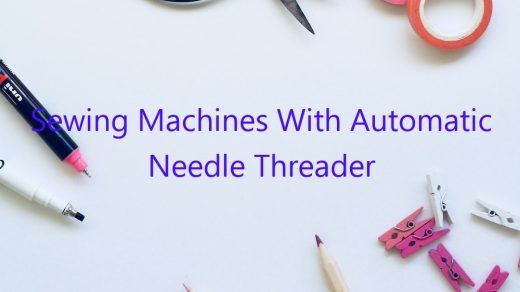A frog goes through four stages during its life cycle- egg, tadpole, juvenile frog, and adult frog. You can make a craft project to help teach kids about the frog life cycle.
You will need:
-Construction paper in different colors
-Scissors
– Glue
– A green pipe cleaner
To make the egg:
Cut a small circle out of construction paper. Cut a smaller circle out of the middle of the first circle. This will be the frog’s egg.
To make the tadpole:
Cut a long, thin strip of construction paper. Cut V-shapes out of the top of the strip. This will be the tadpole’s body. Glue the strip to a larger piece of construction paper to form the body. Cut two small circles out of construction paper and glue them to the top of the body for the eyes. Cut a small triangle out of construction paper for the nose. Glue the green pipe cleaner to the back of the tadpole for the tail.
To make the juvenile frog:
Cut a small square out of construction paper. Cut a smaller square out of the middle of the first square. This will be the frog’s body. Glue the body to a larger piece of construction paper. Cut two small circles out of construction paper and glue them to the top of the body for the eyes. Cut a small triangle out of construction paper for the nose.
To make the adult frog:
Cut a large square out of construction paper. Cut a smaller square out of the middle of the first square. This will be the frog’s body. Glue the body to a larger piece of construction paper. Cut two small circles out of construction paper and glue them to the top of the body for the eyes. Cut a small triangle out of construction paper for the nose.
Contents
How do you make a frog life cycle model?
Making a frog life cycle model is a great way for kids to learn about the different stages of a frog’s life. It can be a fun project to do together as a family, and it’s also a great way to teach children about the science behind the life cycle.
There are a few different ways to make a frog life cycle model. One way is to use a cardboard box. Cut a hole in the bottom of the box, and then cut out the shapes of the different life cycle stages from different colors of construction paper. Tape the construction paper shapes to the inside of the box, and then use green pipe cleaners to create the frog’s legs.
Another way to make a frog life cycle model is to use a small, clear plastic container. Cut out the shapes of the different life cycle stages from different colors of construction paper, and then tape them to the inside of the container. Use green pipe cleaners to create the frog’s legs.
Either way, the most important part of the frog life cycle model is the frog eggs. You can either buy frog eggs from a store, or you can make your own by mixing water and cornstarch together. Once you have the frog eggs, add them to the model and watch them hatch!
What are the 5 stages of a frog’s life cycle?
A frog’s life cycle has five stages: egg, larva, tadpole, juvenile, and adult.
Egg
Frog eggs are often deposited in clusters called frog spawn. They are typically laid in a body of water where the eggs will be safe from drying out and from predators.
Larva
Larvae are tadpoles. They live in the water and feed on small aquatic animals.
Tadpole
Tadpoles are very similar to larvae, but they have legs and can swim. They eat plant material and small animals.
Juvenile
Juveniles are frogs that have finished growing and have started to look like adults.
Adult
Adults are frogs that have finished growing and are able to reproduce.
What are the life cycles of a frog?
A frog goes through a four-stage life cycle, starting as an egg, then a tadpole, then a juvenile frog, and finally an adult frog.
Frog eggs are small and round, and they are laid in clusters on the surface of the water. Tadpoles are very small when they hatch from the eggs, and they have gills that allow them to breathe underwater. Tadpoles grow quickly, and they undergo a dramatic transformation as they develop into juvenile frogs. Juvenile frogs have legs and lungs, and they can live on land or in water. Adult frogs are predators, and they eat a variety of insects and other small animals.
Frogs typically mate during the springtime, and the females lay eggs a few weeks after mating. The eggs hatch into tadpoles a few days to a week later, and the tadpoles grow into juvenile frogs over the course of a few weeks to a few months. Juvenile frogs become adults over the course of a year or two.
What is a frog’s life cycle for kids?
A frog’s life cycle begins when a female frog lays eggs. The eggs hatch into tadpoles, which live in the water and eat algae and other small plants. As they grow, they gradually change into frogs, losing their tails and growing legs. When they are ready, they leave the water and live on land.
How do you make a frog life cycle with clay?
You can make a frog life cycle with clay by following a few simple steps. First, you’ll need some green and brown clay, a model of a frog, and some basic sculpting tools.
To make the body of the frog, roll a ball of green clay and then use your fingers to form it into a smooth, elongated shape. To make the legs, roll out a thin strip of green clay and then cut it into four equal pieces. Bend the legs into a S-shape and then press them onto the body of the frog.
Next, use brown clay to create the frog’s eyes, nose, and mouth. Roll two small balls of brown clay and then press them onto the head of the frog. Use a small tool to make indentations for the eyes, and then use a pointed tool to create a slit for the mouth. Finally, use a toothpick to make small holes for the nostrils.
Once the frog is finished, use a baking powder to bake it in the oven at a low temperature. Let it cool completely before adding the finishing touches. Use a black marker to draw on the pupils of the eyes, and then use a small amount of white clay to create highlights on the frog’s body.
Now your frog is ready to go!
How do you draw a frog let?
There are many ways to draw a frog, but one of the simplest and most popular methods is to use a simple letter “L” as a guide.
To begin, draw a curved line to represent the frog’s body. Next, draw the frog’s head by drawing a small “U” shape at the top of the body. Then, draw the frog’s eyes and mouth. Finally, add the details to the frog’s body and legs.
You can make your frog look more realistic by adding some texture to the body and legs. You can also give the frog a smile by drawing a small “V” shape for the mouth.
Happy drawing!
Why are frogs said to have 2 lives?
Frogs are said to have two lives because they can be both aquatic and terrestrial. Frogs are able to live in water because they possess gills, which allow them to take in oxygen from water. Frogs are also able to live on land because they have a waxy layer on their skin that helps them retain moisture.



